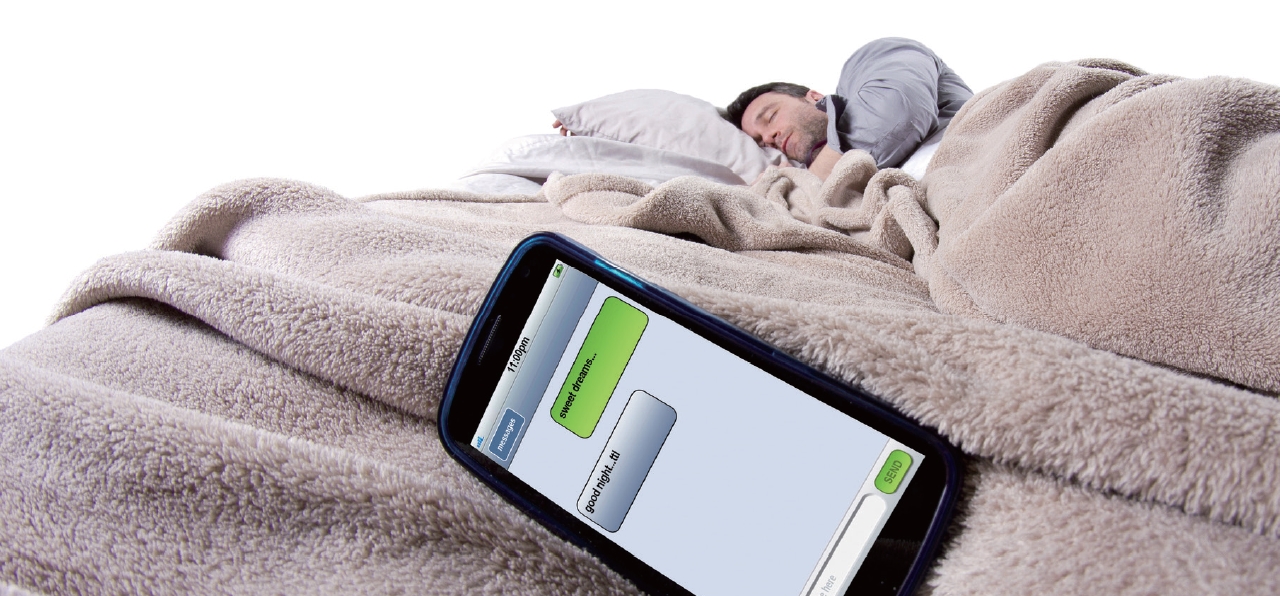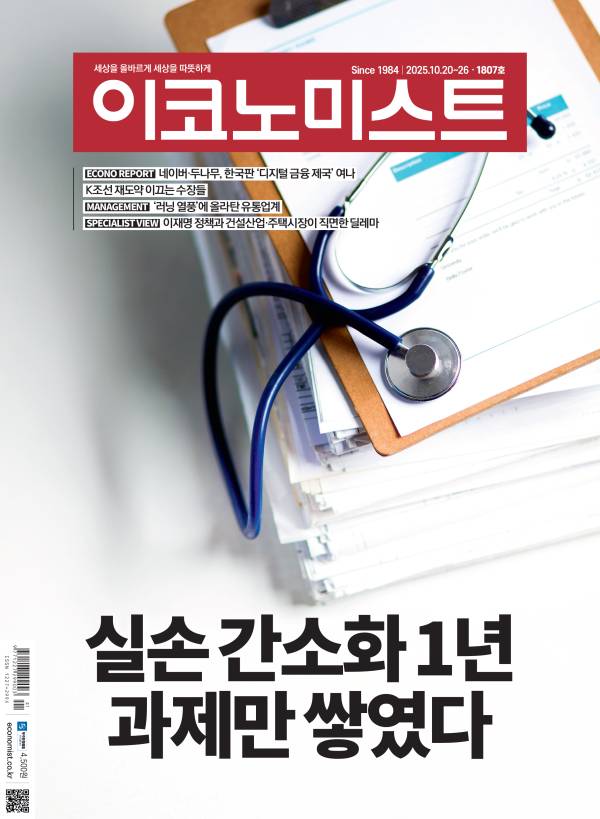- 숙면하려면 어둠 즐겨라

FOR A GOOD NIGHT’S SLEEP, EMBRACE THE DARK SIDE
That’s right. Dark. Your body needs it too.
Being exposed to regular patterns of light and dark regulates our circadian rhythm. Disruption of this rhythm may increase the risk of developing some health conditions including obesity, diabetes and breast cancer.
The physiological processes that control the daily cycle of sleep and wake, hunger, activity levels, body temperature, melatonin level in the blood and many other physiological traits are called the endogenous circadian rhythm.
On its own, the endogenous circadian rhythm is nearly, but not exactly, 24 hours. Our bodies rely on the sun to reset this cycle and keep it at precisely 24 hours, the length of our days. The light, and the dark too, are important signals for the cycle. This circadian rhythm has developed over three billion years as life evolved on Earth in the context of the sun’s day/night cycle. It is built deeply into our genetic makeup.
During the night, in the dark, body temperature drops, metabolism slows and the hormone melatonin rises dramatically. When the sun comes up in the morning, melatonin has already started falling, and you wake up. This natural physiological transition into and out of night is of ancient origin, and melatonin is crucial for the process to proceed as it should.
If you were to put someone in a dark cave with no time cues at all, the cycle will last about 24 hours, but not exactly. Without time cues like those from the sun, eventually that person would become out of sync with people outside. In fact many profoundly blind people, who cannot perceive light, must cope with this de-synchronization in their daily lives.
Many things happen to our bodies in the dark. Levels of the hormone leptin, which helps control hunger, go up. High levels of leptin mean we do not feel hungry, while low levels make us hungry.
Why does leptin go up in the dark? Since we evolved without artificial light at night, one theory holds that leptin goes up at night because it would be good to not be hungry during the night, rather than needing to forage in the dark and possibly get into trouble.
This is fasting that should happen every night, and why we call the first meal in the morning “breakfast.” Experiments in human beings have shown that sleep disruption and turning on lights lowers leptin levels, which makes people hungry in the middle of the night.
In the last decade or two it has become clear that the genes that control the endogenous circadian rhythm, called the “clock genes”, also control a large part of our entire genome, including genes for metabolism, which means how we process the food we eat, DNA damage response, that is how we are protected from toxic chemicals and radiation, and cell cycle regulation and hormone production, that shows how our cells and tissues grow.
Light at night disrupts these processes. The changes that result from exposure to electric light at night have biological connections to disease and conditions that are common in the modern world today, including obesity, diabetes, cancer and depression.
Not all light is the same. Some kinds of light make you more alert and more awake, and others have less of an effect.
Light from the sun is strong in blue, short-wavelength light, although it includes all other colors as well. That’s important in the morning when we need to be alert and awake. But when it comes in the evening or during the night, it fools the body into thinking it’s daytime. We now know that this bright blue light has the strongest effect on lowering melatonin during the night.
Your tablet, phone, computer or compact fluorescent lamp (CFL) all emit this kind of blue light. So using these devices in the evening can prevent that primordial physiological transition to night from occurring. This makes it harder to sleep and might also increase the longer term risk of ill health.
Other kinds of light, like dimmer long-wavelength yellow and red light, have very little effect on this transition. This is the kind of light from a campfire or a candle; even the old fashioned incandescent light bulb is dimmer and redder than the new CFL.
Only in the last 20 years have we acquired a basic biological understanding of how the eye’s retina tells the circadian system it is daytime. Now we know that blue, short-wavelength light is captured by the newly discovered photopigment melanopsin in the retina, and that when blue light stops, we start our physiological transition to nighttime mode.
Before electricity, people experienced bright, full-spectrum days of sunlight and dark nights. We slept in a different way than we do now. The dark lasted about 12 hours and during this time people slept for eight or nine hours in two separate bouts, and were awake, but in the dark, for another three or four hours.
Everything changed when electric lighting was invented in the latter part of the 19th century. Since then there has been an ever increasing assault on dark. Outdoor environments are relentlessly lit, and more and more people use computer tablets and smart phones at all hours, bathing their faces in bright blue light at times of day when they should be transitioning to nighttime physiology.
When people get away from the city and its artificial light to go camping, they often notice a marked improvement in their sleep. A recent study has verified this effect.
Today, most of us get too little light during the day and too much at night for our circadian rhythm to function at its best. It is the rare person who sleeps in a completely dark bedroom, and many people get very little sunlight because they work inside all day long.
What can you do for your circadian health? Get bright, blue light in the morning, preferably from the sun, and use dim, longer-wavelength light, that is more yellow and red like incandescent, in the evening. And sleep in the dark.
This will certainly improve sleep, and may reduce risk of later disease.
숙면하려면 어둠 즐겨라
그렇다. 어둠 말이다. 우리 몸은 어둠도 필요하다.
우리는 밝음과 어둠의 규칙적인 반복에 노출됨으로써 하루의 생체 리듬을 조절한다. 이 리듬이 깨지면 비만, 당뇨, 유방암 등의 건강 문제가 생길 위험이 높아질 수 있다.
매일 잠자고 깨는 주기, 배고픔, 활동 수준, 체온, 혈액의 멜라토닌 수준 등을 조절하는 생리적 과정을 내인성 생체 리듬(endogenous circadian rhythm)이라고 부른다.
내인성 생체 리듬은 정확하진 않지만 거의 24시간을 주기로 한다. 우리 몸은 태양을 기준으로 이 주기를 조정해 24시간을 맞춘다. 따라서 빛과 어둠이 이 주기의 중요한 신호다. 지구에서 생명체가 진화한 30억 년 동안 밤낮 주기의 맥락에서 이런 생체 리듬이 만들어져 우리의 유전자 구성에 깊이 각인돼 있다.
어두운 밤에는 체온이 내려가고 신진대사가 느려지며 멜라토닌 호르몬 수치가 크게 올라간다. 아침에 해가 뜨면 멜라토닌 수치가 급속히 떨어지면서 잠을 깬다. 밤으로 빠져들고 빠져나오는 자연스런 생리적 전환은 태고적부터 시작됐다. 그런 과정이 정상적으로 진행되려면 멜라토닌이 필수적이다.
깜깜한 동굴에 갇혀 시간을 전혀 모를 때도 이 주기는 정확히는 아니지만 약 24시간을 기준으로 반복된다. 그러나 일출과 일몰 같은 시간 신호가 없이 오랜 기간 동굴에 갇힌 사람은 갈수록 외부 사람과 생체 리듬 주기가 달라진다. 실제로 시각 장애가 심해 빛을 인식하지 못하는 사람은 일상생활에서 다른 사람과 생체 리듬이 달라 어려움을 겪는다.
우리 몸은 어둠 속에서 많은 일을 겪는다. 배고픔을 통제하는 렙틴 호르몬의 수치가 올라간다. 렙틴 수치가 높으면 배고픔을 느끼지 못하고 수치가 낮으면 공복을 느낀다.
어둠 속에서 렙틴 수치가 왜 올라가는 걸까? 초기의 인간은 밤의 인공 조명 없이 진화했다. 깜깜한 밤에 먹을 것을 찾으려고 숲 속으로 나가면 매우 위험하다. 따라서 밤엔 배가 고프지 않은 게 좋기 때문에 밤이 되면 렙틴 수치가 올라가도록 프로그램됐다는 것이 한 가지 이론이다.
그래서 우리는 사실상 매일 밤 단식을 한다. 아침 식사를 영어로 ‘브렉퍼스트(breakfast, 어원으로 풀이하면 단식을 중단한다는 뜻이다)’라고 부르는 이유다. 밤에 잠이 오지 않아 불을 켜면 렙틴 수치가 내려간다는 사실이 실험을 통해 확인됐다. 렙틴 수치가 내려가면 한밤중에도 배가 고프다.
지난 20년 동안의 연구에서 내인성 생체 리듬을 통제하는 일명 ‘시계 유전자’가 우리 유전체의 상당 부분도 통제한다는 사실이 밝혀졌다. 신진대사(우리가 섭취하는 음식물을 처리한다), DNA 손상 반응(독성 물질과 방사능으로부터 우리 몸을 보호한다), 세포 주기 조절과 호르몬 분비(우리 세포와 조직이 성장할 수 있도록 해준다)를 조절하는 유전자가 거기에 포함된다.
한밤중의 밝은 빛은 이런 과정을 교란한다. 밤에 전기불에 노출되는 결과가 가져다오는 변화는 비만, 당뇨, 암, 우울증 등 현대 세계에서 흔한 질병이나 상태와 생물학적으로 관련돼 있다.
빛이라고 전부 같지는 않다. 어떤 빛은 우리를 더 깨어 있게 만들고 어떤 빛은 그런 효과가 적다.
햇빛은 모든 색을 포함하지만 단파장 푸른 빛이 강하다. 우리가 잠에서 깨어나 정신을 차려야 하는 아침에는 그런 빛이 중요하다. 그러나 저녁이나 밤에 그런 빛에 노출되면 우리 몸은 마치 낮인 것처럼 착각한다. 이런 밝은 푸른 빛이 한밤중에 멜라토닌 수치를 낮추는, 다시 말해 잠을 방해하는 가장 강한 효과를 가졌다는 사실이 과학적으로 입증됐다.
태블릿 PC, 스마트폰, 컴퓨터, 삼파장 전구(CFL)는 전부 이런 푸른 빛을 발한다. 따라서 이런 기기를 밤에 사용하면 밤으로의 원초적인 생리적 전환을 방해한다. 그래서 잠들기가 더 어렵고 장기적으로는 건강을 해칠 위험이 커진다.
좀 더 흐릿한 장파장 노란 빛과 붉은 빛은 이런 전환에 거의 영향을 주지 않는다. 캠프파이어나 촛불의 빛이 좋은 예다. 구식 백열전구도 신형 CFL보다 더 흐릿하고 붉다.
우리 눈의 망막이 생체 주기 시스템에 낮이 됐음을 알려준다는 사실이 밝혀진 지 20년도 채 안 된다. 이제 우리는 단파장 푸른 빛이 망막에서 새로 발견된 광색소 멜라놉신에 의해 포착된다는 것을 안다. 푸른 빛이 멈추면 우리는 생리적으로 밤 주기를 시작한다.
전기가 없을 땐 인간은 낮의 밝은 햇빛과 밤의 어둠 두 가지만 경험했다. 그때는 지금과 수면 방식이 달랐다. 어둠이 약 12시간 지속됐고 그때 인간은 두 차례에 나눠 8~9시간 수면을 취했다. 그러곤 3~4시간을 어둠 속에서 깨어 있었다.
그러다가 19세기 후반 전기 조명이 발명되면서 모든 게 바뀌었다. 그때부터 어둠에 대한 공격이 계속 강화됐다. 야간에 야외 조명이 눈부시고 갈수록 많은 사람이 태블릿 PC와 스마트폰을 하루 종일 사용하면서 밤주기 생리로 전환해야 할 시간에도 밝고 푸른 빛에 노출된다.
도시와 인공 조명을 벗어나 숲 속으로 캠핑을 가면 대개 잠을 잘 잔다. 과학적 연구 결과로 그런 효과가 입증됐다.
지금 우리는 낮에는 빛을 너무 적게 받고 밤에는 빛을 너무 많이 받아 생체 리듬이 최적 수준으로 작동하지 않는다. 컴퓨터나 스마트폰 때문에 완전히 깜깜한 침실에서 자는 사람도 드물고 하루 종일 실내에서 활동하다 보니 햇빛을 충분히 받는 사람도 드물다.
우리의 생체 리듬을 건강하게 유지하기 위해 무엇을 할 수 있을까? 아침에 밝고 푸른 빛을 충분히 받고(햇빛이 최고다), 저녁엔 흐릿한 장파장 빛(백열등처럼 노랗고 붉은 색이 많은 빛)을 애용하라. 그리고 조명이 없는 어둠 속에서 수면을 취하라. 이런 방식을 통해 우리는 수면의 질을 높이고 장기적으로 질병에 걸릴 위험을 줄일 수 있다.
[ 필자 리처드 스티븐스는 코네티컷대학 의과대학원 교수다. 이 기사는 환경·건강 전문매체 ‘컨버세이션(The Conversation)’에 먼저 실렸다. ]- 번역 이원기
ⓒ이코노미스트(https://economist.co.kr) '내일을 위한 경제뉴스 이코노미스트' 무단 전재 및 재배포 금지










![도로 위의 크리에이터, ‘배달배’가 만든 K-배달 서사 [김지혜의 ★튜브]](https://image.isplus.com/data/isp/image/2025/09/25/isp20250925000152.400.0.jpg)
![비혼시대 역행하는 ‘종지부부’... 귀여운 움이, 유쾌한 입담은 ‘덤’ [김지혜의 ★튜브]](https://image.isplus.com/data/isp/image/2025/10/02/isp20251002000123.400.0.jpg)



당신이 좋아할 만한 기사
브랜드 미디어
브랜드 미디어
[단독]지투지바이오, 새 빅파마와 공장실사 돌입…추가 기술이전 청신호
바이오 성공 투자, 1%를 위한 길라잡이팜이데일리
일간스포츠
이데일리
과즙세연, 뻑가에 일부 승소…“1천만원 배상”
대한민국 스포츠·연예의 살아있는 역사 일간스포츠일간스포츠
일간스포츠
일간스포츠
"집 한 채 가졌다고 세금폭탄 맞나요?"…줄줄이 초비상 걸렸다
세상을 올바르게,세상을 따뜻하게이데일리
이데일리
이데일리
[마켓인]현지 공략 위해 LP된 VC들…알짜 딜 ‘줍줍’ 할까
성공 투자의 동반자마켓인
마켓인
마켓인
로슈도 치매진단키트 허가, 미소짓는 피플바이오
바이오 성공 투자, 1%를 위한 길라잡이팜이데일리
팜이데일리
팜이데일리